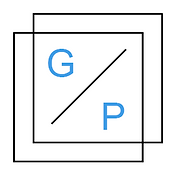2. Front Matter
- Grailing Press

- Apr 6, 2024
- 3 min read
World’s End

Make it through.
The title, the epigraph, the dedication—all pointing to the great calamity of Eliot’s generation. World War on a single page.
The title tells us we are in no good place; even if one had never read Weston or heard of Jessie Weston, one knows, colloquially, it is no good being in a wasteland, let alone a Waste Lande (See Dispatch #1). What do we expect out of such a place—decay, dispiritedness, degeneration. The title (once understood in the context of Weston and her influence on the poem) tells us we are situated in the context of a redemptive grail quest—for that is what the waste land meant to the literary tradition Weston investigates and expounds upon. The waste land exists because of grail-like motifs of degeneration and decline, and that land (whether an actual countryside or, say, early twentieth-century London/Europe) now sits fallow waiting for a grail quester to reverse the fortune of the people. Just the title tells us so much about Eliot’s potential diagnosis and prescription. So much of reading this poem is a study in seeing the general completely reflected in even the smallest particular, as it is here.


